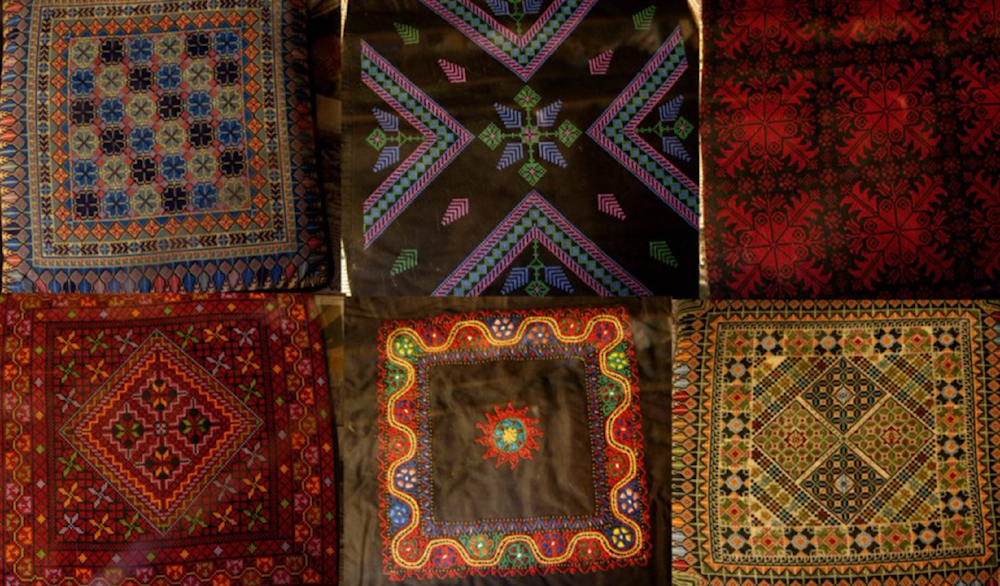In honor of Palestinian women, historic tapestry debuts in US
The show, which honors International Women's Day, will debut on Sunday with a special ceremony from 3:00 pm to 5:00 pm at the Museum's location in Woodbridge, Connecticut.
-

Examples of Palestinian embroidery, tatreez and tahriri (X photo)
The Palestine Museum US will host the unique debut of the Palestine History Tapestry, a remarkable collection of embroidered artwork commemorating Palestinian women's strength and traditional stitching.
The show, which honors International Women's Day, will debut on Sunday with a special ceremony from 3:00 pm to 5:00 pm at the Museum's location in Woodbridge, Connecticut, as well as via Zoom.
The Palestine History Tapestry was established in Oxford in 2012 and officially launched in cooperation with the Middle East Monitor in London in 2018.
It comprises approximately 100 delicately embroidered panels that eloquently reflect Palestine's rich history and cultural heritage. The tapestry has now been relocated to the United States, where it now resides permanently in the Palestine Museum US.
This amazing collection, designed by Palestinian artists, was stitched over 12 years by Palestinian women living in refugee camps throughout Lebanon, Jordan, the occupied West Bank, Gaza, and al-Naqab.
"Despite the immense challenges Palestinian women face — including occupation, apartheid, and genocide — they have continued to play a pivotal role in the Palestinian struggle for over a century," Faisal Saleh, Executive Director of the Palestine Museum US, said.
According to Saleh, Palestinian women have played a "pivotal role" in the collective struggle despite the challenges they faced, like "occupation, apartheid, and genocide."
"This exhibition is a tribute to their courage and an opportunity to honor their contributions to the community," he expressed.
Jehan Alfarra, co-chair of the Palestine History Tapestry, told Middle East Monitor, “Each stitch in this tapestry is a thread that binds Palestinian women together, no matter where they are in the world,” explaining that despite being scattered across borders, the traditional art of "tatreez – traditional Palestinian embroidery – connects us to our ancestors, our heritage, and to one another."
Alfarra expressed that displaying such work not only celebrates the largest collection of illustrative work telling the story of Palestine but "the unbreakable bonds that keep our culture alive despite displacement and fragmentation."
The exhibition will include a selection of panels from the tapestry, allowing visitors to see firsthand the meticulous craftsmanship and profound historical storylines woven into each piece.
The Museum hopes that this exhibition will emphasize the important role that Palestinian women have played in maintaining their country's identity and legacy.

 3 Min Read
3 Min Read








